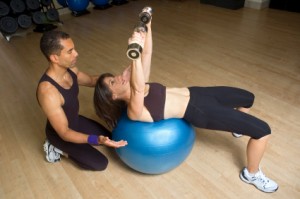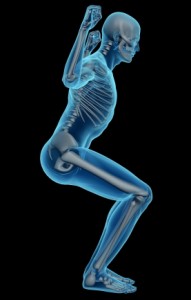Corrective Exercise
Corrective Exercise is the scientific application of the most up to date principles of exercise programming, based on an in-depth evaluation of the individual’s body.
Some factors considered are:
- Strength
- Flexibility
- Endurance
- Balance/Agility
- Co-ordination
- Speed
- Power
 A detailed program is designed based on your exercise history, current level of fitness, history of injuries / restrictions, and specific goals. Properly designed training should address the need for each of the above seven factors in your current or projected activities (work, hobbies, sports, etc.).
A detailed program is designed based on your exercise history, current level of fitness, history of injuries / restrictions, and specific goals. Properly designed training should address the need for each of the above seven factors in your current or projected activities (work, hobbies, sports, etc.).
The first session consists of one of the three levels of evaluation.
The second session you are educated about the reasons for the specific components in their program and how to perform the specific postural shifts, movements patterns, stretches, and exercises.
The typical scenario is to have 2-4 additional training sessions to ensure that the exercises have been “programmed” into your nervous/muscular system correctly.
After you can do the program properly, you may hire the trainer to keep you on track, or may do the program on your own for 3-4 weeks or until time to upgrade the program.
The initial program ensures that stability factors are sufficient to apply additional force to the structure. This often involves corrective stretches to balance muscle tension (correcting posture) as well as muscle isolation exercises. Once isolation is good and range of motion is adequate, they need to integrate these muscles into more complex movement patterns. Then the training progresses with significantly less concern about injuries.
From professional athletes, weekend warriors at tennis and golf, to those training without results or debilitated with pain, the objective is to produce real results. Results defined by your body performing better and you experience improvement or longevity in your activities.
Optimum Performance Training = Corrective Exercise
Three primary factors that make this training stand out:
1. The level of Evaluation
The evaluation you will receive will include much more than blood pressure, pulse rate, and body fat %. We’re told to stretch, but we often don’t know which muscles to stretch because we haven’t measured to see what is tight and what is not, right? By the way, wouldn’t it be great if the person training you knew how far our head, shoulder, etc. is supposed to turn? You will also be observed stepping up, squatting down, pushing, pulling, bending, twisting, and more to make sure your movements are recruiting the right muscles.
2. Dependence vs. Empowerment
After the person who measures you writes the ideal program for your individual body, the next step is to teach you how to do the movements just right, and making sure the correct muscles are getting the job done. Once the trainer knows that your body has integrated the correct movements it is ideal to utilize the trainer to re-check your form once or twice (more frequently only when you desire more focused attention or motivation to achieve your personal goals most efficiently). Your program gets updated periodically as your body progresses and you need variety to stay committed.
3. The Investment/Value ratio
Optimum Performance Training $125/hr-
A high level evaluation can be 1-3 hours depending on the severity of the problem and
whether there are surgical reports, x-rays, MRI’s to read.
Program Design generally takes one hour considering all of the above factors
Phase 1 Training-1-3hours Depending on how quickly your body learns new movements
Phase 2 Training-1-3hours Updating your program as your body progresses
 One month later you update the program to keep up with your body’s adaptation.
One month later you update the program to keep up with your body’s adaptation.
This is great value for time/money spent IF the trainer you choose is capable of:
- Evaluating your body with detailed precision
- Designing an individualized program from this information (that gets progressively greater results)
- Teaching you the exercises so that your body eventually does the correct movements as a “default” program.


